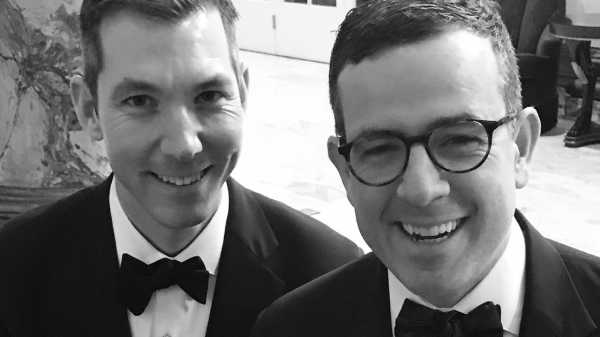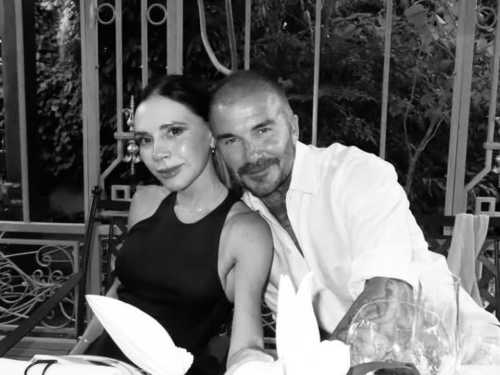
My husband died in May, the morning after his older brother’s wedding, in
San Francisco. The wedding was a joyful celebration, the next morning
its opposite.
Peter was only thirty-nine. An autopsy revealed that he died from
Loeffler’s endocarditis, a disease as rare in its diagnosis as it is
mysterious in its causes. There was no warning. The morning he died,
Peter and I should have been barrelling to the airport for a return
flight home. Instead I rode with a police officer, trailing the
ambulance. Through the vehicle’s porthole I could see the medics
working frantically to bring Peter back to life. In retrospect, I think
that he was already dead.
After I had said goodbye to Peter’s body, a nameless nurse, who must
have been in the wee hours of a late-night shift, came to sit with me.
It was around 6 A.M. She grabbed my hands and met my eyes. “It will be
hard,” she said. “It will be long. It will be painful. But you have to
keep talking.” That was the first advice I received as a widower. It
remains the best.
I put her advice to immediate action, calling our friends, his boss, and
my co-workers to tell them the news.
Peter and I lived together for close to twenty years, first as roommates,
for three of our four years in college, and then, apart from a loopy,
mistaken six-month move to Los Angeles, in New York City ever since. It
was Peter’s idea to get married. He brought up the idea just after
Thanksgiving in 2012. The New York State Legislature had passed the
Marriage Equality Act, in the summer of 2011. I never quite knew what
motivated his sudden desire to make our relationship legal. Neither of
us wanted a wedding, or children. “O.K., I’m in,” I said, as if I were
committing to a road race or a set of season tickets.
“I don’t want 2013 as an anniversary year. It’s an ugly number,” Peter
said. “We should get married this year. What about next month? Why not
December 12, 2012?”
“That would make our anniversary 12/12/12. I like that,” I said. I never
thought of myself as a numerologist, but I shared the bias. Marriage, I
suppose, allows us to rationalize the irrational in tandem.
We got married, on a Wednesday afternoon, in the office of the Honorable
Justice Rosalyn Richter, of the New York State Supreme Court. In front
of a handful of friends, we proclaimed our commitment and kissed.
Nothing had changed, but we were now wearing rings and had a marriage
license.
Once a cynic about marriage, I came to think that my ring was magic.
This piece of metal, an object of no utility whatsoever, soon became my
most prized possession. I loved the comfort and the aesthetic and the
power of wearing it. I also came to appreciate that wearing a ring sent
a signal. Homosexuals have to come out of the closet to strangers
regularly; a ring on my finger and the words “my husband” lowered a
conversational hurdle.
We had bought our rings at Cartier on Fifth Avenue. We went separately
and, ever the romantics, bought our own. Peter picked out the style and
e-mailed me instructions: “Ask for Saralee. She knows to expect you.” I
still have her business card in my desk. I had mine engraved with “P & B
12.12.12.” Peter did the same, with the initials switched.
The morning Peter died, after his parents and brothers and cousins and
uncles and aunts came to the hospital to say goodbye, a close friend of
our family’s, a woman whose husband, Tony, perished when the Twin Towers
fell, sat with all of us as we wailed and wept.
“What did you do with Tony’s ring?” I asked her.
“They never found it, sweetie,” she told me, as she reached for another
tissue to hand me. “Of course,” I spluttered in apology.
Back in New York City, upheld by my sister and my parents, after I had
carried Peter’s ashes into our apartment, and planned his funeral, and
written a eulogy, and begun the unfathomable amount of paperwork that
death demands, a friend who had lost his own husband only a month
earlier dropped off a jewelry box at my apartment. It contained a silver
chain. “You can put Peter’s ring on it and wear it around your neck, but
only if you want,” he told me. I have worn it ever since.
As for my own ring, the one around my finger, I didn’t want to take it
off. “Don’t make any decisions that you don’t feel ready to make,”
someone had wisely warned me.
As autumn approached, my parents agreed that it would be good for my
mental health to skip my first holidays without Peter. “Let’s go on a
trip,” my father said. “Anywhere but Asia or Australia. I don’t want too
long a flight.”
“Let’s go to Peru,” I suggested. An avid bird-watcher, I had always
wanted to visit the Tambopata region of Peru, home to the largest known
clay licks on Earth. (A lick is a cliff where macaws, parrots, and
parrotlets congregate to ingest mud, a vital source of sodium.) I can
think of no more breathtakingly gaudy sight in the world. As our guide
marched us through the jungle, day after day, in search of an
ever-narrowing list of the area’s antbirds and antthrushes and
flycatchers and manakins, I came to see the trip as avian
psychopharmacology. It was a perfect, if privileged—and wet and
buggy—way of avoiding the tinselled and ornamented triggers of the
holidays.
On the flight home, as we began our descent into the Atlanta airport
early in the morning on New Year’s Day, I went to the bathroom to
freshen up. Washing my hands, I noticed that my ring felt loose. It slid
easily up and down my soapy finger. I must have sweated away some weight
in the jungle. Minutes later, back in my seat, I looked down and noticed
with alarm that it had vanished. I patted my lap and the seat pocket and
the armrests. Nowhere.
I began a panicked search as the flight reached its gate and the
passengers began to deplane. It had to be somewhere on the plane, but
where? A flight attendant, alerted to my plight, came to help.
“O.K., let’s divide up. I’m going to get you some rubber gloves and a
blanket. Go into the bathroom and dump the trash into the blanket and
sift through it piece by piece,” she instructed. “I’ll start searching
around the seat.”
I did as told, one crinkled tissue and contact-lens case and string of
dental floss at a time. No ring.
Back at my seat, she looked dismayed. “I can’t find it,” she lamented.
“We have to find it,” I said. “My spouse passed away in May.” Her eyes
bulged with sympathy.
Another flight attendant came to help. Up went the seat cushions. They
made me empty my pockets.
The first flight attendant, a woman named Maria, told me, “I don’t know
if it will help, but in my culture — I’m from Ecuador— if you lose
something like a ring, it’s a sign of something meant to be, a sign of a
new beginning . . . ”
“I’m not ready for a new beginning,” I mumbled.
A third flight attendant came to help. “Perhaps a fresh set of eyes will
help,” she suggested.
She dived under the seat, her legs akimbo, snorkeling. Lifting up some
panelling, she searched and probed. “Is it silver?” she asked a few
moments later.
“Yes! It’s platinum! That’s it!” I exclaimed.
Holding the ring in my fingers, I bowed to the flight attendants in thanks. If the moment
were a silent film, I would have looked as if I were proposing to each
of them in turn—to Maria, then to Erica, and finally to Autumn, who had
found the ring. I gave them each a hug and slid the ring back on my finger.
As I walked down the plane’s aisle, feeling almost as happy as a new
groom, the intercom announced, “The wedding ring has been found.”
At the jet bridge, a ground agent beamed. “Phew! Now you can go home and
your wife won’t be angry.” If only.
That evening, home from Peru and back in my apartment, I thought about
my ring, and how I didn’t want to risk losing it again. In the moments
on the plane when I thought that I had lost it forever, I conflated the
ring with my marriage. How could I have been so careless? I owe Peter a
lot. Protecting the rings we exchanged was the least of my debts.
It was New Year’s Day, a day I had longed to reach. We widows and
widowers become adept at magical thinking. It’s easy, and necessary, to
fool oneself that a step from one calendar to the next will dull the
pain.
Time doesn’t necessarily dull grief’s anguish but it does provide the
tools and the space for its control. In the early days, it only clobbers
you. I collapsed to the kitchen floor the first morning I realized that
Peter would never flick the switch on our coffee pot again. A few weeks
later, I found a receipt from Brooks Brothers festooned with his
exuberant signature, tucked into a book. I felt an urgent need to
protect the crinkled slip as if it were an heirloom. His closet—his
shoes, his suits, his shirts—remains an untouchable shrine. But, with
time, control comes. It sounds crazy, but I applauded myself after I
decided that it was O.K. to take an empty bottle of shampoo—the last one
we shared—to the recycling bin.
But a wedding band clearly has no place in the trash, even by accident.
I kept thinking of what that Ecuadoran flight attendant told me in my
panic, that losing an object can be seen as an event that’s meant to be,
or a sign of a new beginning. I always knew that my ring was magic, but
could it have slipped off my finger of its own volition and lost itself? A favorite Spanish-language teacher of mine always delighted
that, in Spanish, the accidental reflexive is a subtle way for speakers
to forgive themselves for losing or breaking or forgetting everyday
objects: I didn’t lose the car keys; they lost me! In English, I would
have had to say “I lost my ring,” a woeful admission. But in Spanish I could say “Se me perdió el anillo”—“The ring lost itself to
me”—and blame the ring instead. Perhaps that flight attendant knew
something I didn’t. Maybe my ring did try to lose itself on that Delta
flight; maybe it was a sign that, if I didn’t exert control and remove
it myself, it would do so on its own.
Later that night, in the apartment we had shared for years, I slipped
the ring off my finger and placed it on the box holding his ashes. If
I’m wearing his ring around my neck, I like the idea that he gets to
wear mine.
Sourse: newyorker.com






